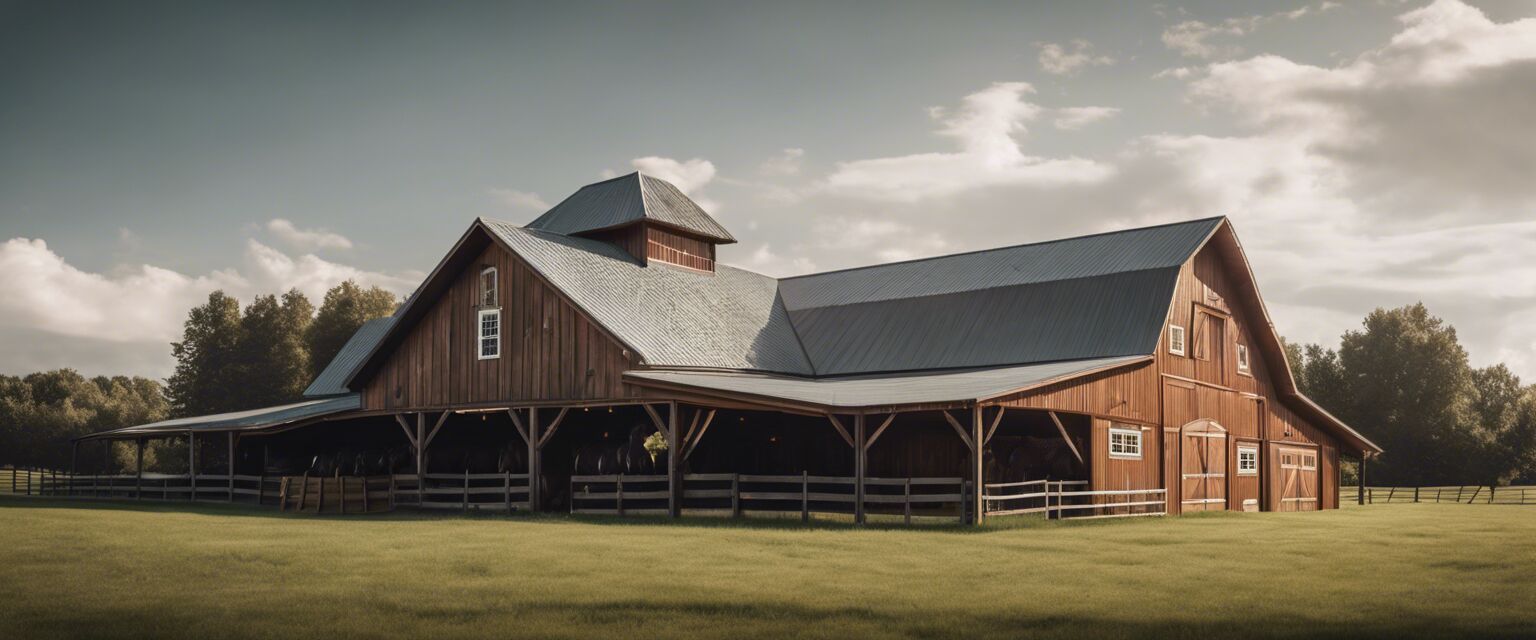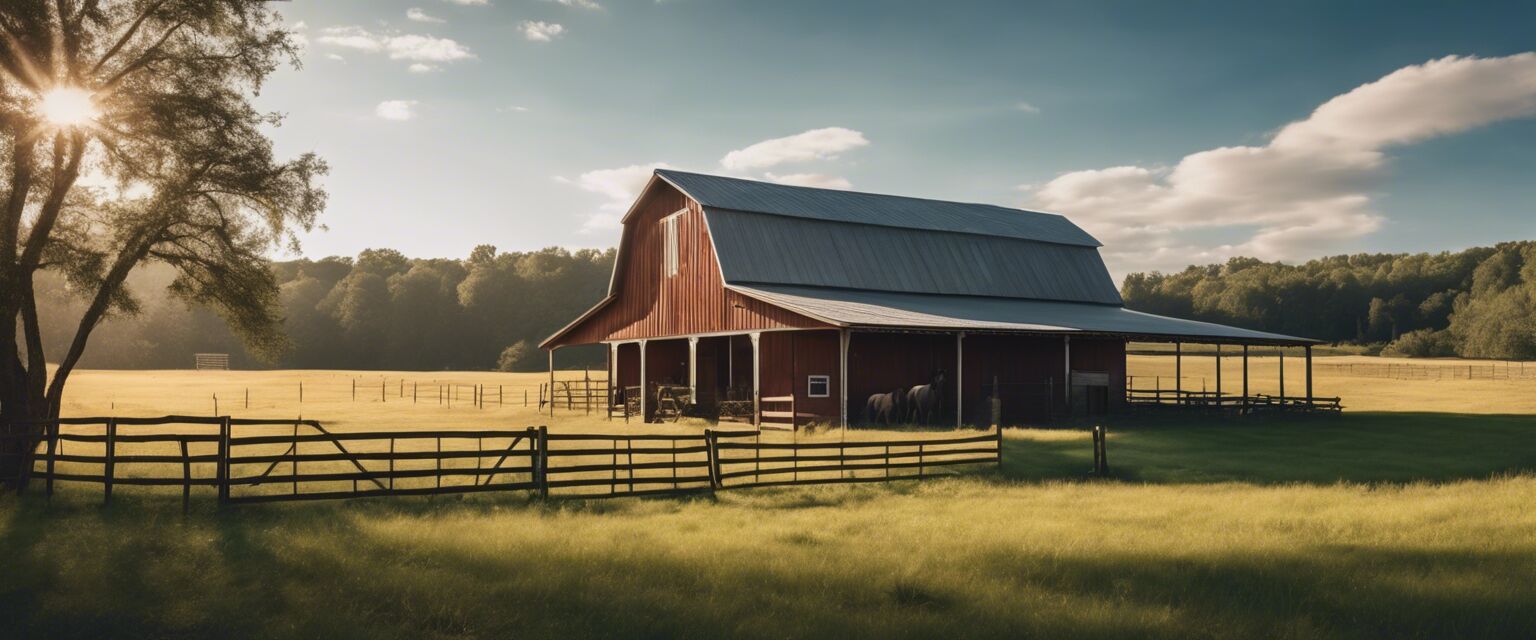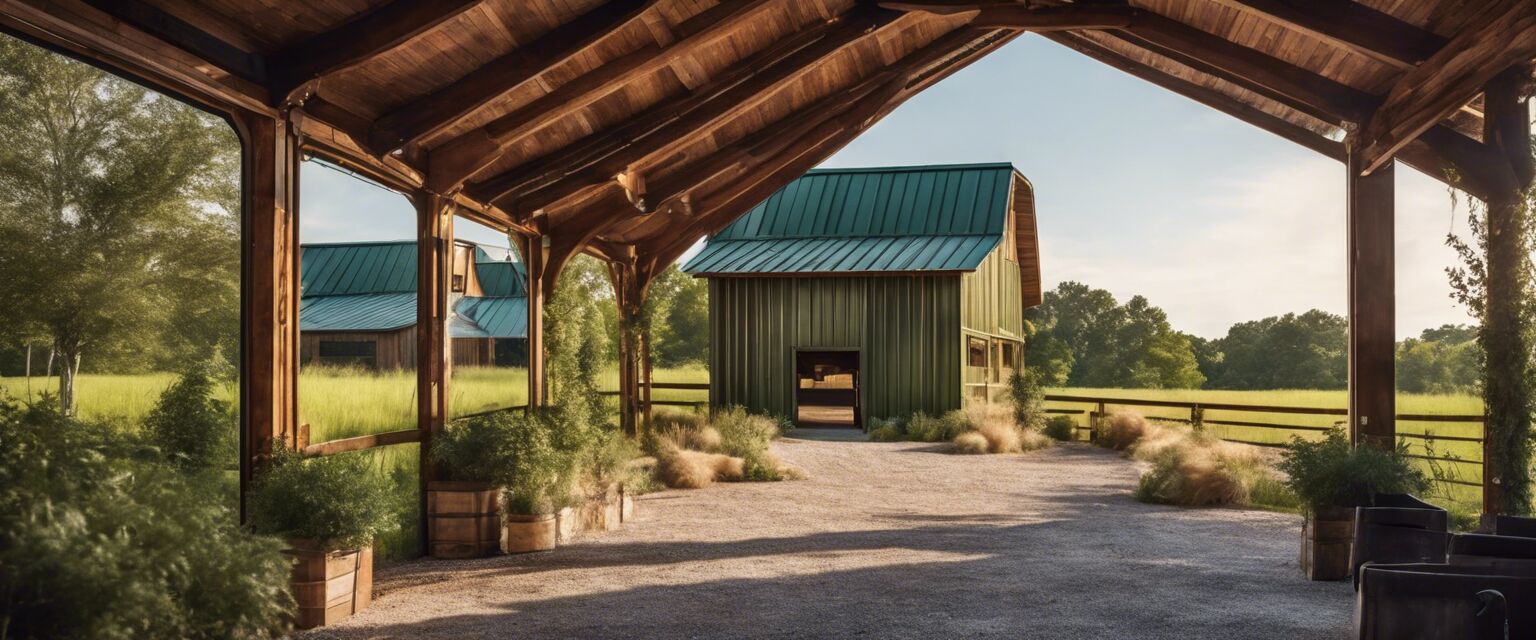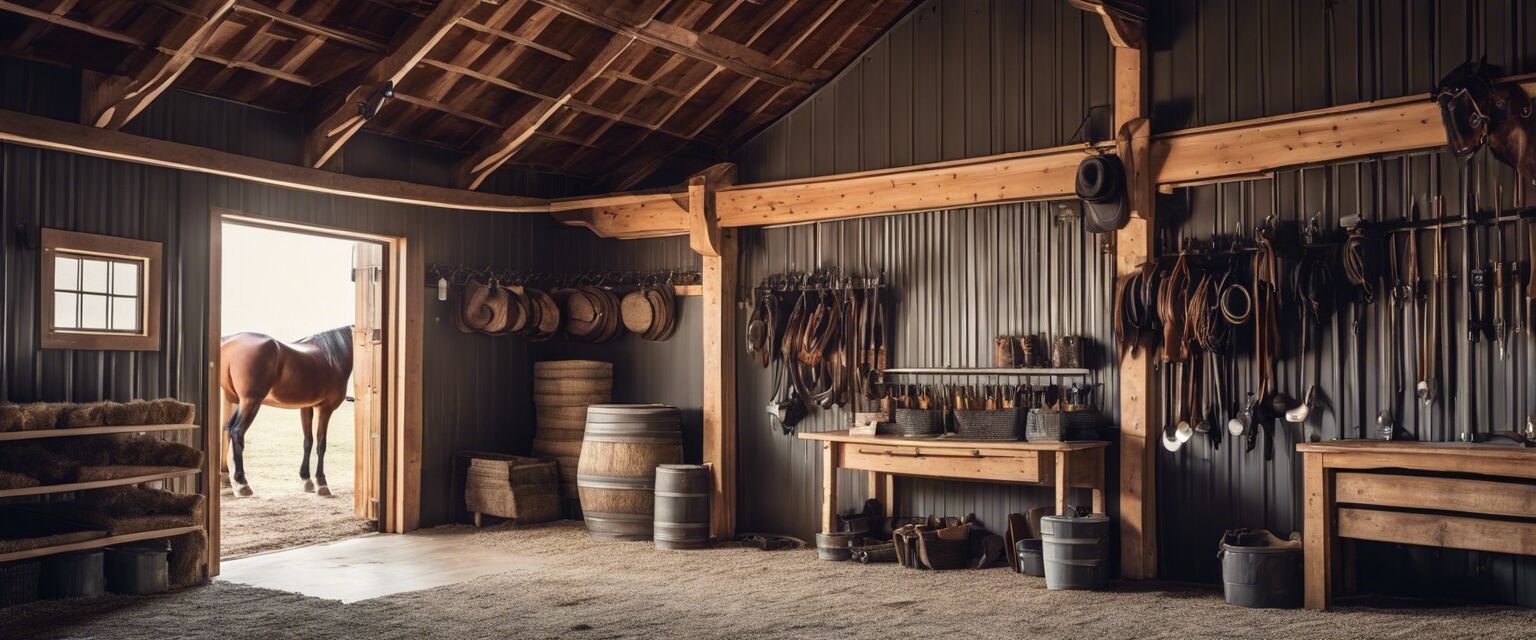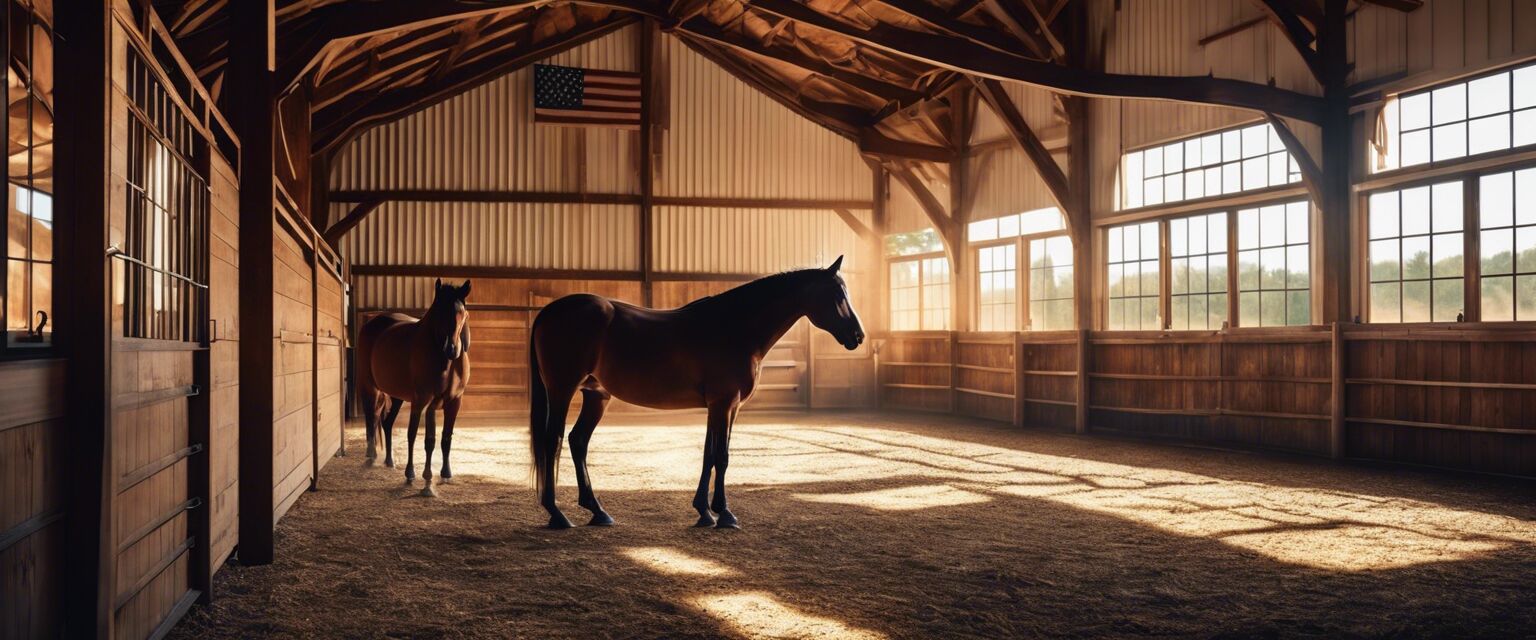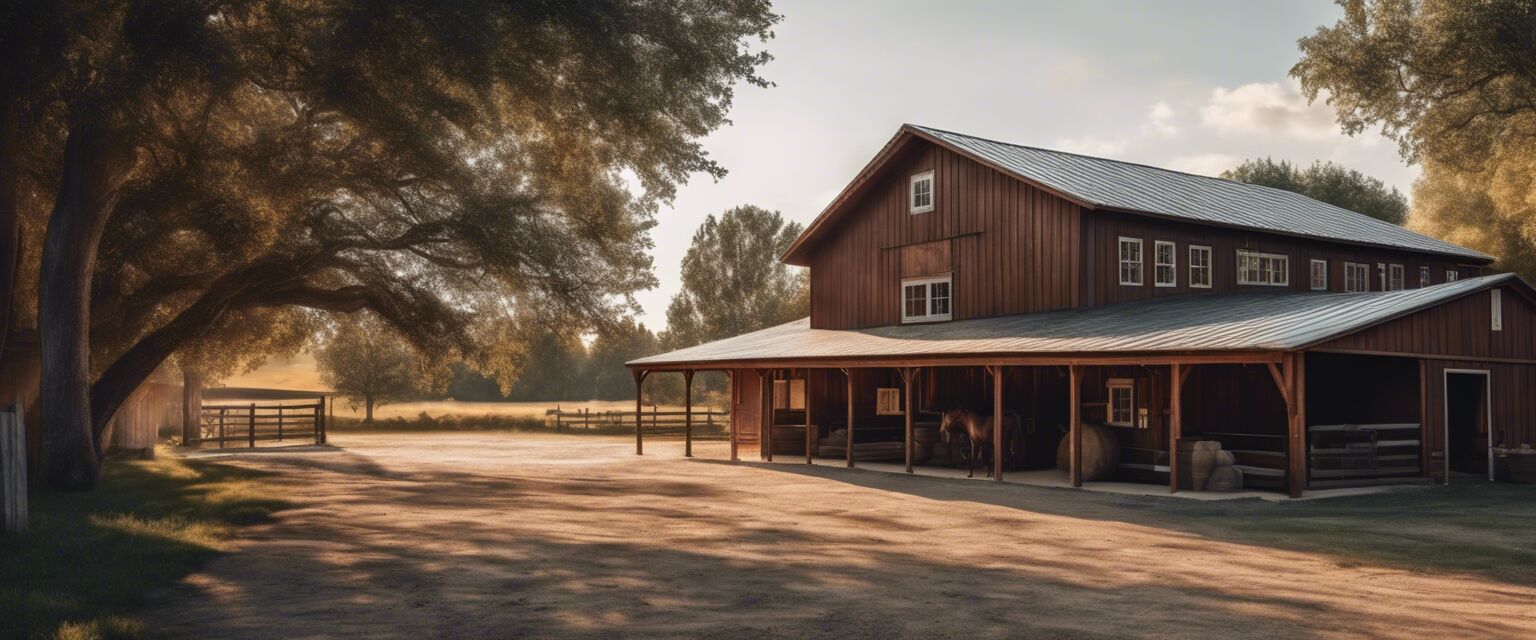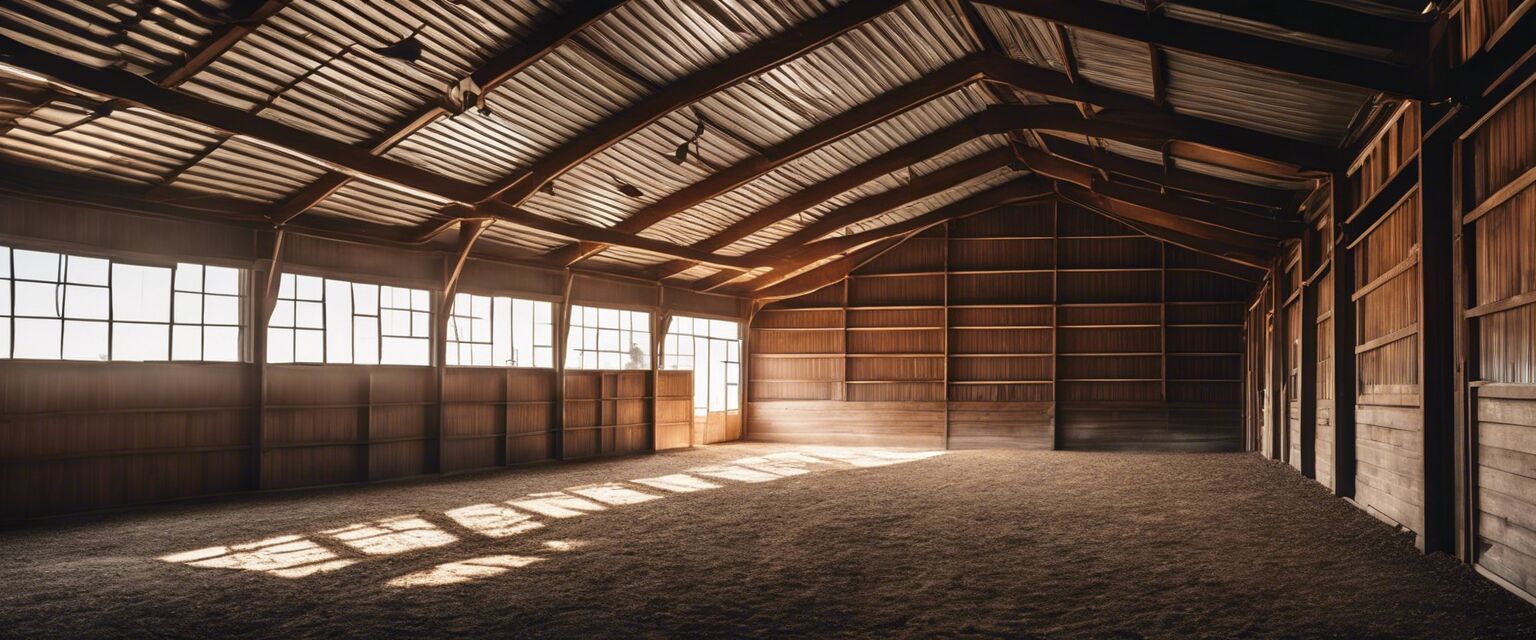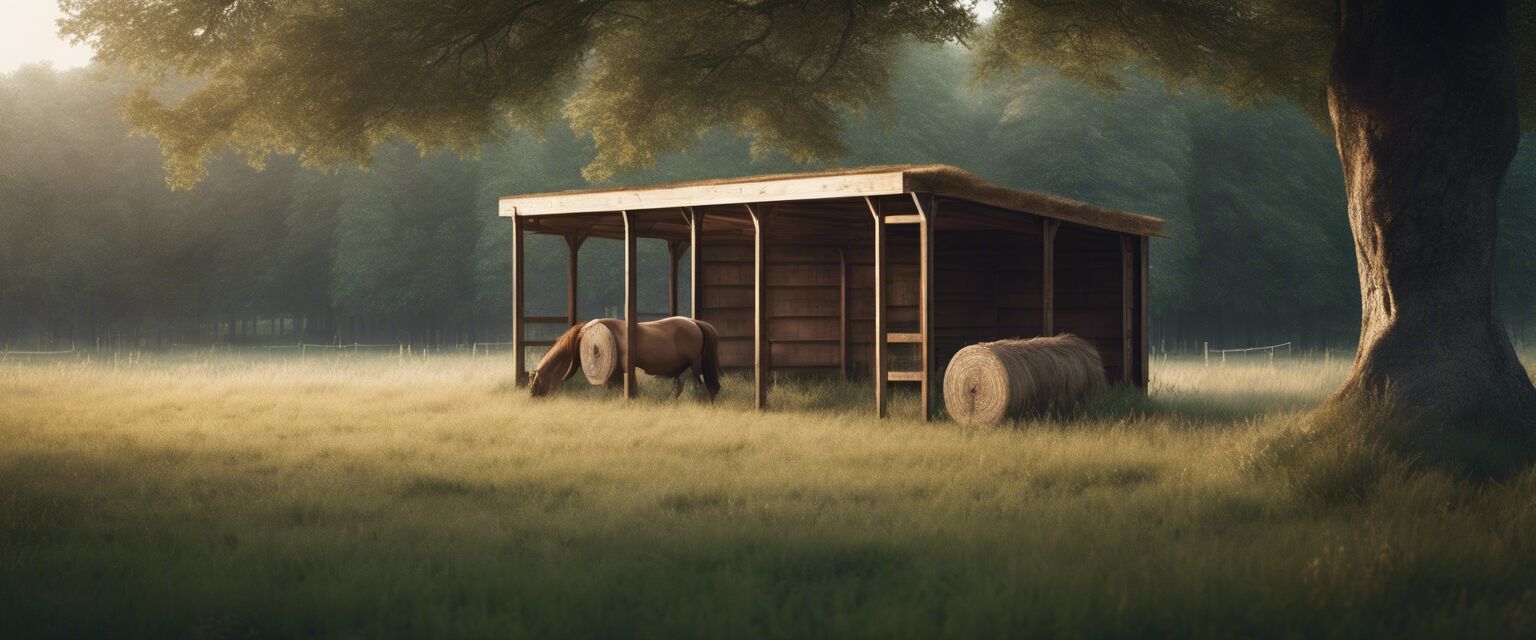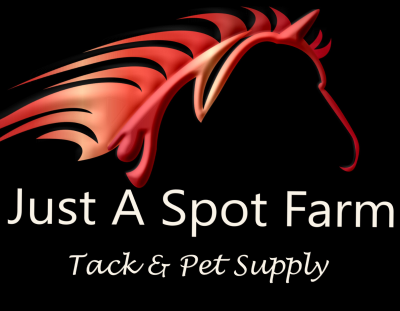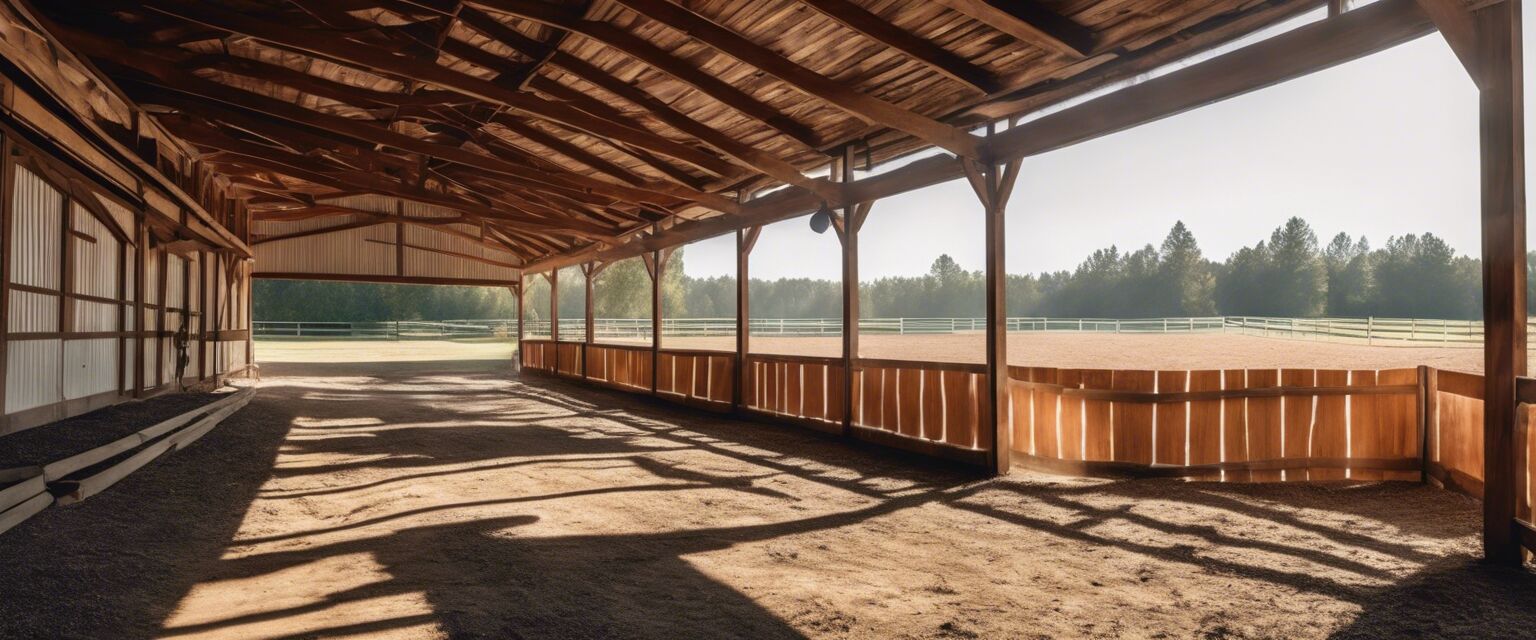
Horse Barn Safety
Key Takeaways
- Ensure proper ventilation and cleanliness in your barn.
- Implement strong safety features such as sturdier doors and secure stalls.
- Regularly check feeding and watering systems for hazards.
- Provide a safe environment both in the barn and pastures for your horses.
- Utilize effective pasture management tools for overall safety.
Creating a safe horse barn is essential for the health and well-being of your horses. In this guide, weâll explore crucial safety tips and features commonly overlooked when building or maintaining a DIY horse barn.
Essential Safety Features in Horse Barns
When designing your horse barn, consider the following safety features:
| Feature | Description | Importance |
|---|---|---|
| Sturdy Doors | Heavy-duty doors that can withstand impacts from horses. | Prevents injuries and ensures security. |
| Ventilation | Proper air circulation to reduce ammonia build-up. | Maintains a healthy environment for horses. |
| Non-slip Flooring | Floors made from materials that prevent slipping. | Reduces the risk of falls and injuries. |
| Good Lighting | Bright, even lighting to minimize shadowy areas. | Helps in visibility, preventing accidents. |
Regular Maintenance Checks
Regularly inspecting your barn and its components is vital. Here's what to focus on:
- Check for damage in stalls, fences, and barn structure.
- Keep feeding and watering systems clean.
- Inspect electrical systems for safety hazards.
- Ensure all tools and equipment are stored safely.
Feeding Solutions
Feeding your horses safely is crucial in preventing health issues. Opt for:
Pros of safe feeding solutions
- Reduces waste
- Prevents overfeeding or underfeeding
- Enhances overall horse health
Cons of unsafe feeding practices
- Can lead to health issues such as colic
- Increases the risk of mold or spoilage
- Creates feed competition among horses
Incorporating Pasture Management
Efficient pasture management tools play a critical role in horse barn safety. Here are some tools to consider:
- Electric Fencing
- Soil Management Tools
- Watering Systems
- Pasture Aerators
Common Safety Hazards in Horse Barns
Identifying safety hazards early can prevent accidents. Here are some common hazards to address:
| Hazard | Potential Risk | Preventative Measures |
|---|---|---|
| Loose Fencing | Horses escaping or injuring themselves. | Regularly inspect and repair fencing. |
| Cluttered Walkways | Trip hazards resulting in injury. | Keep pathways clear and organized. |
| Unsafe Storage | Potential injuries from tools or feed. | Store items properly and securely. |
| Inadequate Fire Safety | Fires can spread quickly in barns. | Install smoke detectors and fire extinguishers. |
Conclusion
Safety in a horse barn is paramount. By following the tips and precautions highlighted in this article, you create a secure environment that safeguards against potential hazards while enhancing your horses' health and comfort. Explore more on Barn Safety and Security and Feeding Solutions to find essential tools for safe barn management.
Further Reading
Dive deeper into ensuring safety and comfort for your horses by checking out our related articles:
- Barn Building Materials
- Barn Décor and Comfort
- Stable Equipment
- Watering Systems
- Pasture Management Tools



